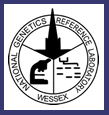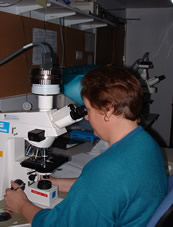
_
|
||||||
|
The
Transmitted Sub-Telomeric Imbalance Collection
Sub-Telomeric Imbalance Chart |
||||||
|
Welcome to the Transmitted Sub-Telomeric Imbalance Collection. This Collection contains examples of sub-telomeric deletions, duplications and rearrangements that may have no phenotypic consequences. Further information about Copy Number Variation (CNV) in sub-telomeric regions can be found in e.g. the Database of Genomic Variation (see below) and in the reviews by Balikova et al (Hum Mutat 2007;28:958-967) and de Vries et al (J Med Genet. 2003 Jun;40:385-398). Disclaimer Structure
of the Collection In Group I, both parents and children are phenotypically normal. This cannot, however, guarantee that all other examples with the same chromosomal breakpoints will necessarily be free of phenotypic consequences. This is especially true when the extent of the sub-telomeric imbalances have not been mapped and when de novo examples of the same abnormality are found. Nevertheless, two de novo examples without direct transmission have been included in Group 1 (the del(4)(pterpter) and the derived dup(17)(qterqter) of Joyce et al, 2001). In Group II, the majority of families are ascertained because of the phenotype of the proband but parents and/or other family members with the same sub-telomeric imbalance are unaffected. The sub-telomeric imbalance may therefore be considered a coincidental finding in the family concerned. For comparison, Group III consists of directly transmitted subtelomeric imbalances that have phenotypic consequences in both parents and children. Accessing
the Collection Notes: It should be remembered that phenotypic variability is the hallmark of many visible and sub-microscopic chromosomal conditions. The working conclusions that arise from this Collection can be summarised as: Very few Group 1 transmitted sub-telomeric imbalances have been ascertained for incidental reasons and found in a normal parent. This is most likely to reflect the fact that sub-telomeric testing is rarely undertaken without significant clinical suspicion of a visible or sub-microscopic chromosome abnormality. The great majority of sub-telomeric imbalances were Group 2 imbalances ascertained in an affected child and subsequently found in a normal parent. These imbalances provide precedents for regions that may have no phenotypic consequences. By contrast with the Chromosome Anomaly Collection, there were fewer Group 3 families than Group 2 families but it is not known whether the parents of Group 2 families are always closely examined by a Clinician who would be capable of detecting subtle features of the phenotype present in their affected offspring. Only by gathering further examples will it be possible to identify how much sub-telomeric material can be lost without phenotypic consequences and identify Sub-Telomeric Imbalances that are consistently free of phenotypic consequences. Contribute
data: Links: The Toronto Database of Genomic Variants (http://projects.tcag.ca/variation/) and the Seattle Structural Variation Database (http://humanparalogy.gs.washington.edu/structuralvariation/). Other databases that may contain further examples include: The European Cytogenetic Association Register of Unbalanced Chromosome Abnormalities which allows on-line registration and to collection of large numbers of rare cytogenetic and molecular cytogenetic aberrations at www.ecaruca.net/. The DatabasE of Chromosomal Imbalance and Phenotype in Humans using Ensemble Resources (DECIPHER) which has been inspired by the need to distinguish clinically significant imbalances from transmitted imbalances or polymorphisms detected using micro-arrays. On-line registration and submission can be carried out at www.sanger.ac.uk/PostGenomics/decipher. The long established UK Association of Clinical Cytogeneticists (ACC) Chromosome Abnormality Database (CAD) which is on-line for registration and free searches. This Collection has been compiled by Dr John Barber who can be contacted at: National Genetics Reference Laboratory (Wessex) Salisbury
NHS Foundation Trust UK Acknowledgements The help of Gemma Watkins, Carolyn Wallis, Kelley Gardner and Mac Gardner in the construction of this entry is gratefully acknowledged. Viv Maloney kindly constructed the chromosomal idiograms.
|
||||||
Last Updated: 7 August, 2008 by G. Watkins. |
